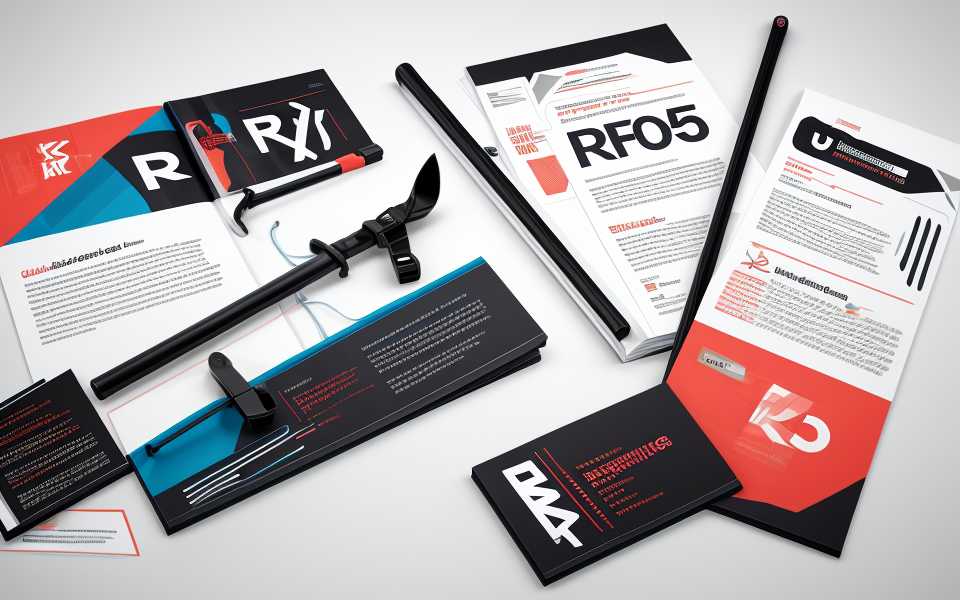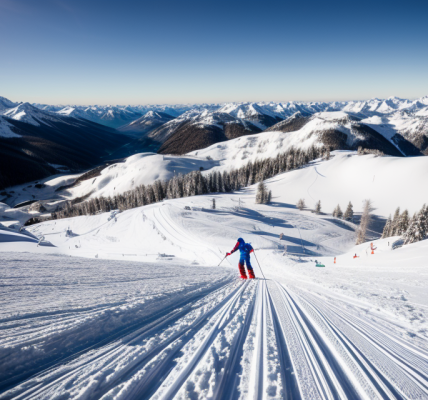Are you a ski enthusiast who has ever wondered about the meaning behind the “R” designation in skis? Look no further, as this comprehensive guide will uncover the mystery behind this fascinating topic. Whether you’re a beginner or an experienced skier, understanding the significance of the “R” in skis can enhance your skiing experience and help you choose the right equipment. So, buckle up and get ready to explore the world of skiing with a new perspective.
Understanding the Basics of Ski Designations
The Importance of Ski Designations
Improving Ski Performance
Ski designations serve a crucial purpose in enhancing the performance of skis. These designations provide valuable information about the ski’s construction, materials, and intended use, which helps skiers make informed decisions when selecting the appropriate equipment for their needs. By understanding the ski designations, skiers can choose skis that match their skiing ability, preferred terrain, and snow conditions, resulting in improved performance and a more enjoyable skiing experience.
Assisting Consumers in Making Informed Purchasing Decisions
Ski designations also play a significant role in assisting consumers in making informed purchasing decisions. When shopping for skis, consumers are often overwhelmed by the various options available, and ski designations provide a valuable tool for evaluating and comparing different skis. By understanding the meaning behind the various designations, consumers can make more informed decisions about the skis that best suit their needs and budget. Additionally, ski designations can help consumers identify the key features and benefits of each ski, such as its flexibility, stability, and maneuverability, allowing them to make a more educated purchase.
Common Ski Designations
Ski designations serve as a way to classify skis based on their intended use and target audience. Some of the most common ski designations include gender-specific designations, ability-based designations, and all-mountain designations.
Gender-Specific Designations (M, W)
Ski manufacturers often use gender-specific designations to categorize skis based on the gender of the intended user. The “M” designation is used for men’s skis, while the “W” designation is used for women’s skis. These designations are often used to indicate that the skis are designed to meet the specific needs and preferences of male or female skiers.
Ability-Based Designations (R, G)
Ability-based designations are used to categorize skis based on the skill level of the intended user. The “R” designation is used for recreational skis, which are designed for beginner and intermediate skiers. The “G” designation is used for groomed-only skis, which are designed for skiers who primarily ski on groomed trails and avoid off-piste terrain.
All-Mountain Designations (AR, AG)
All-mountain designations are used to categorize skis that are suitable for a wide range of skiing conditions and terrain. The “AR” designation is used for all-mountain rock skis, which are designed for skiers who frequently encounter rocky and challenging terrain. The “AG” designation is used for all-mountain groomed skis, which are designed for skiers who primarily ski on groomed trails but also venture off-piste occasionally.
These ski designations help skiers choose the right skis for their skill level, preferred terrain, and skiing style. By understanding these designations, skiers can make informed decisions when purchasing skis and ensure that they have the right equipment for their needs.
Exploring the Role of the “R” Designation in Skis
What Does the “R” Stand For?
When it comes to understanding the “R” designation in skis, it is important to note that this is not a standardized designation across the industry. In fact, different ski manufacturers may use the “R” designation to represent different features or characteristics of their skis. However, there are three common features that are typically associated with the “R” designation in skis:
- Rockered Tip: A rockered tip is a design feature that allows the tip of the ski to rise off the ground, providing increased floatation in soft snow and making it easier to initiate turns. This design feature is commonly associated with powder skis, but can also be found on some all-mountain skis.
- Radial Sidecut: A radial sidecut is a design feature that produces a smooth, continuous curve along the length of the ski. This design feature is commonly associated with all-mountain skis and is designed to provide improved stability and control on all types of terrain.
- Reduced Tail: A reduced tail is a design feature that results in a shorter, flatter tail on the ski. This design feature is commonly associated with park skis and is designed to make it easier to spin and land tricks.
While these features are commonly associated with the “R” designation in skis, it is important to note that the specific design features associated with the “R” designation can vary from ski to ski and manufacturer to manufacturer. As such, it is important to carefully consider the specific features and characteristics of a given ski before making a purchase.
How Does the “R” Designation Affect Ski Performance?
- Improved Turning Ability
- The “R” designation on skis indicates that the ski has a directional sidewall, which means that the edges of the ski are bent inward. This design provides the ski with enhanced torsional rigidity, allowing it to hold its shape better during turns.
- The increased edge grip provided by the directional sidewall design results in improved turning ability, making it easier for skiers to maintain control and precision during turns.
- Enhanced Flotation in Soft Snow
- Skis with the “R” designation are typically designed with a rocker-tipped shape, which allows them to float better in soft snow.
- The rocker-tipped shape of “R” skis reduces the ski’s contact with the snow, making it easier to glide over soft snow and maintain balance.
- Reduced Tendency for Delayed Transition
- The “R” designation on skis indicates that the ski is designed for use in either direction, which means that it is less susceptible to delayed transition.
- Delayed transition occurs when a ski becomes stuck in a layer of snow, making it difficult to initiate a turn. Skis with the “R” designation are less likely to experience delayed transition due to their versatility and ability to perform well in both forward and backward movements.
In summary, the “R” designation on skis indicates that the ski is designed with specific features that enhance its performance in various skiing conditions. These features include improved turning ability, enhanced flotation in soft snow, and reduced tendency for delayed transition. Understanding the role of the “R” designation can help skiers choose the right skis for their needs and preferences, ultimately improving their overall skiing experience.
The Difference Between “R” and “G” Skis
The ski industry uses various designations to indicate the intended use and level of expertise required for each type of ski. Among these designations, the “R” and “G” designations are perhaps the most commonly used.
Catering to Different Skill Levels
The “R” designation is used to indicate that a ski is intended for advanced to expert skiers. These skis are typically stiffer and more responsive than “G” skis, providing greater control and stability at high speeds. They are designed to handle the demands of more challenging terrain and are ideal for skiers who prefer to tackle steep slopes and deep powder.
On the other hand, “G” skis are designed for intermediate skiers who are looking for a more versatile and forgiving ski. These skis are typically softer and more forgiving than “R” skis, making them easier to control and more suitable for a wider range of skiing conditions. They are ideal for skiers who want to improve their skills and explore different terrain types, but are not yet ready to tackle the most challenging slopes.
In summary, the “R” and “G” designations indicate the intended level of expertise required for each type of ski. “R” skis are designed for advanced to expert skiers who demand greater control and stability, while “G” skis are designed for intermediate skiers who are looking for a more versatile and forgiving ski.
Choosing the Right Skis for Your Needs
Factors to Consider
When selecting the perfect pair of skis, several factors must be considered to ensure a satisfying and safe skiing experience. These factors include:
- Skiing Ability: The level of skiing proficiency influences the type of ski required. Beginners typically opt for wider skis with softer flex patterns, while advanced skiers often prefer narrower skis with stiffer flex patterns. Expert skiers may benefit from the stability and control offered by carved skis.
- Terrain Preferences: Different ski designs are suitable for various terrains. For instance, all-mountain skis are ideal for exploring different areas of the mountain, while freestyle skis are designed for tricks and jumps in the park. Backcountry enthusiasts require skis with a wider range of versatility, such as touring or splitboarding skis.
- Snow Conditions: The snow conditions play a crucial role in determining the appropriate ski type. For example, skis with a higher waistline and narrower width are suitable for hard-packed or icy snow, while powder skis feature a larger surface area and shorter length for optimal performance in deep snow.
Tips for Selecting Skis with the “R” Designation
Consult Ski Manufacturer’s Recommendations
One of the first steps in selecting skis with the “R” designation is to consult the ski manufacturer’s recommendations. Most ski manufacturers provide a comprehensive guide on their website or in their product catalog that outlines the recommended “R” designation for various skiing conditions. By consulting these recommendations, you can ensure that you are selecting a ski that is appropriate for your skill level and the conditions you will be skiing in.
Try Before You Buy
Another tip for selecting skis with the “R” designation is to try them before you buy them. Many ski shops offer demo days or rentals where you can try out different skis to see which ones feel best for you. This is especially important if you are new to skiing or if you are trying a new “R” designation. Trying before you buy can help you make an informed decision and ensure that you are selecting a ski that will meet your needs.
Seek Expert Advice
Finally, it is always a good idea to seek expert advice when selecting skis with the “R” designation. A professional ski instructor or salesperson at a ski shop can provide valuable insights into which skis are best for your needs. They can also help you understand the differences between different “R” designations and how they will affect your skiing experience. Seeking expert advice can help you make a more informed decision and ensure that you are selecting the right ski for your needs.
FAQs
1. What does the “R” designation mean in skis?
The “R” designation in skis refers to the fact that the ski is designed to be rented or used by the general public. This means that the ski is intended to be affordable and accessible to a wide range of skiers, rather than being designed for elite or professional skiers.
2. Is an “R” ski a lower quality ski?
No, an “R” ski is not necessarily a lower quality ski. In fact, many “R” skis are designed to be high-quality and durable, while still being affordable for the average skier. The “R” designation simply means that the ski is intended for rental or public use, rather than being designed for a specific group of elite skiers.
3. Can I use an “R” ski for competition?
While some “R” skis may be suitable for competition use, it is important to note that they are not designed specifically for this purpose. If you are a competitive skier, you may want to consider investing in a ski that is specifically designed for competition use, rather than relying on an “R” ski.
4. Are “R” skis suitable for all skiers?
Yes, “R” skis are generally suitable for a wide range of skiers, including beginners, intermediate, and advanced skiers. However, it is important to note that different “R” skis may be better suited for different types of skiers, depending on their skill level and skiing style.
5. Can I purchase an “R” ski?
Yes, you can purchase an “R” ski, as they are designed to be affordable and accessible to the general public. However, it is important to note that some “R” skis may only be available for rental, rather than for purchase. If you are interested in purchasing an “R” ski, it is best to check with your local ski rental shop or retailer to see if they have any available for sale.




